Water Management on the Plantations
(Published in the newspaper Amigoe on the 26th of March 2025)
In the last part, we explored how plantations sprang up across Curaçao. Now, let’s talk about the climate. Curaçao has a semi-arid climate, with an average annual rainfall of just 550 millimeters. And guess what? The evaporation rate is super high, averaging 5 to 8 millimeters per day, depending on the temperature and wind speed. So, how did these plantations manage to stay hydrated? Well, they had two clever ways of doing it. First, they collected water from roofs in rain tanks. And second, they built dams in the rooien (a type of dry stream that only transports water during rain showers) to store underground water. On Curaçao, a dam is actually two things: the earthen or stone wall that stops the water, and the puddle of water that forms in front of the dam after a rain shower.
Water collection at plantation buildings
Water was collected from the roofs of almost all plantation buildings and channeled through gutters to a cistern. Sometimes, the cisterns were located inside to minimize evaporation.
The rooien
Curaçao has a special line called the watershed that runs along its length. It’s like a boundary between the highest points on the south and north coasts. North of the watershed, the water flows through rooien to the north coast. South of the watershed, it goes through the rooien to the south coast. Together, the rooien channel the rainwater from the land to the sea. A map of the rooien in Curaçao is attached for you to check out.
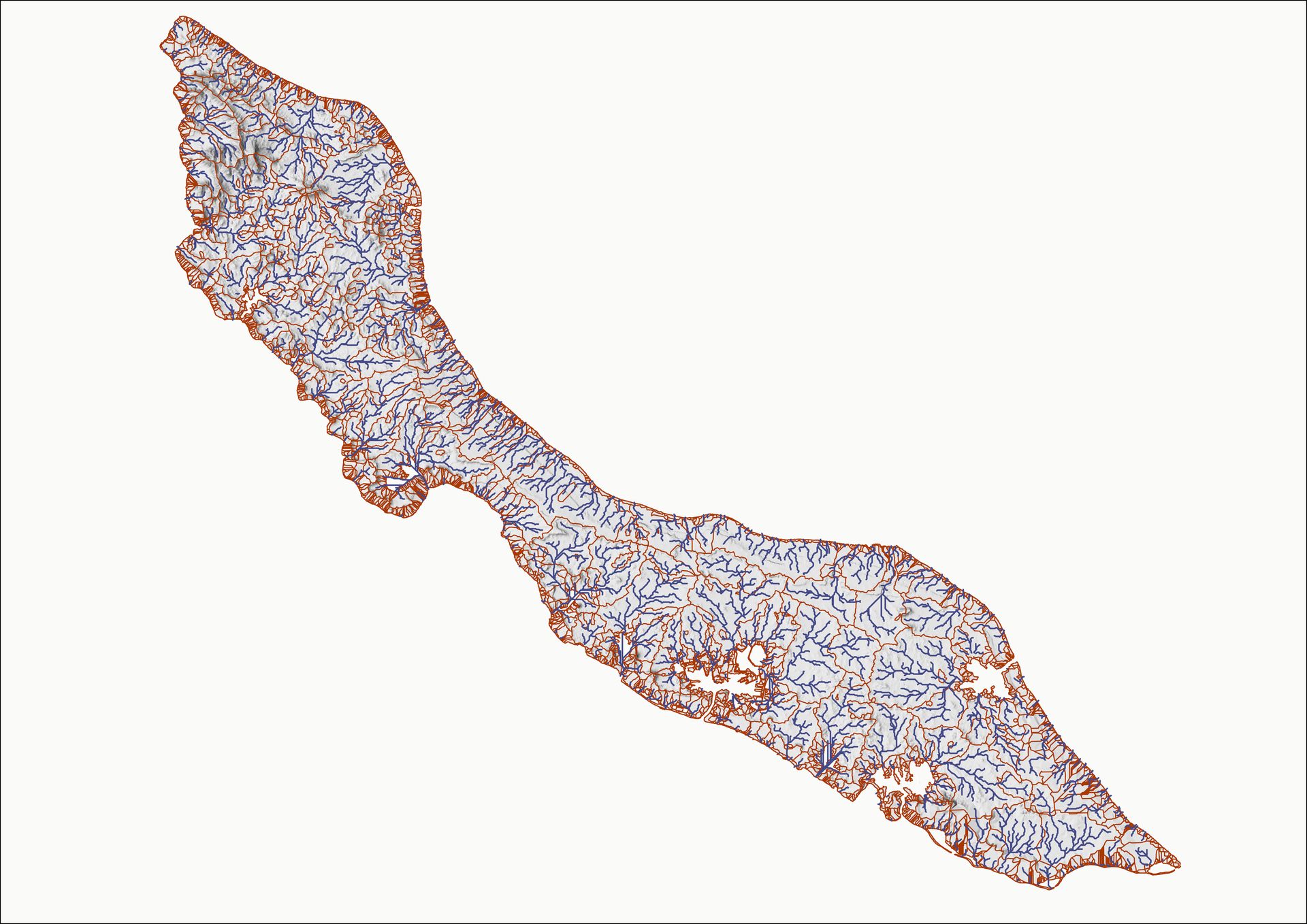
Map of rooien on Curaçao
Dams and wells
Rainwater is fresh water, and Curaçao is a dry island. So, all the rainwater that goes into the sea is a big loss for the island. People figured this out a long time ago. On the old plantations, they built dams to stop some of the rainwater and let it soak into the ground. This way, the water stayed underground and couldn’t evaporate. They could then dig wells to get the water and use it for farming. Dams and wells were always used together. On Curaçao, there are two types of wells. Some wells, you have to lift the water up with a bucket or pump (powered by windmills). Others, you can just walk into them. These wells look like small lakes or ponds with a slope or a staircase on one side to get in. They’re called “Pos di Pia” in the Papiaments language.
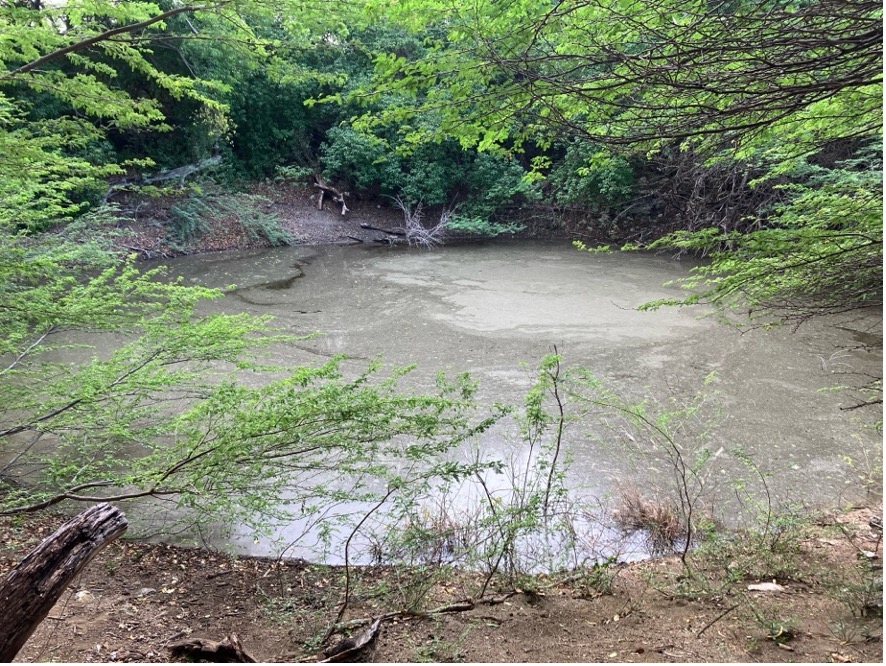
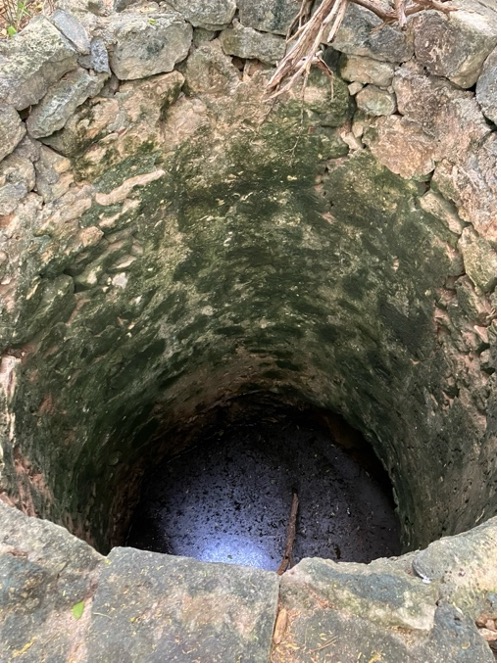
“Pos di Pia” and well in the Christoffelpark
By the way, not all the dams on Curaçao are plantation dams. Back in the early 1900s, they also built earthen dams to boost agriculture. After World War II, they built more earthen dams to meet the growing water needs of the population and the refinery. A map with all the dams on Curaçao is attached below.
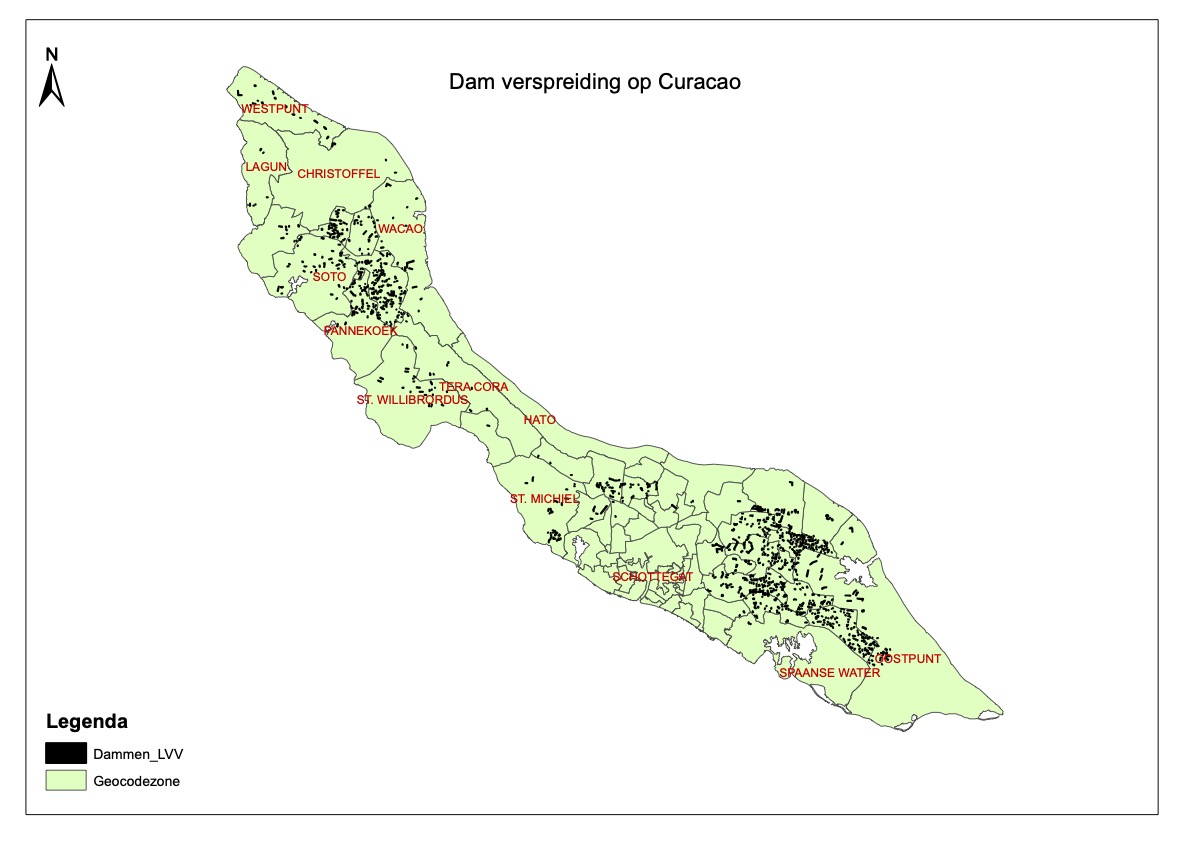
Map of dams on Curaçao
There were often dam systems. Several successive dams were then made in one rooi, each holding back part of the rainwater. At the beginning of the rooi, these dams were still small. Closer to the sea, the dams were larger, because the rooi also received water from side roois and side roois from side roois. So the amount of water behind a dam increases as one gets closer to the sea.
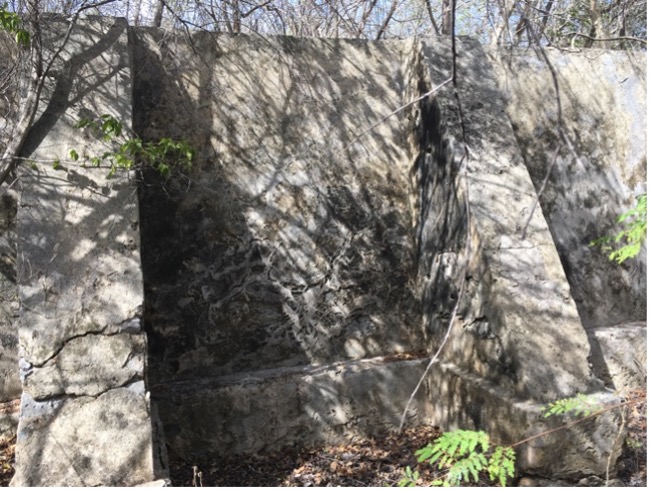
Dam Rooi Baki (at Pos Monton) in the Christoffel Park
Imagine you let water flow over the edge of a dam. It’ll damage the dam and the dam might even collapse. So, a well-built dam has a reinforced low point (sakadó in Papiaments) where water can flow through after the dam is full. It’s like the opening in a sink, called the overflow, which prevents flooding.
If it doesn't rain much, a dam can stop all the rainwater. However, if it rains hard, a dam can no longer stop all the rainwater. The dam should be too big. The excess rainwater just continues via the sakadó. In case of heavy rain, part of the water will always flow through. Often that is to the next dam in the same rooi and eventually to the sea.
In the plantation period, dams were also maintained. If this does not happen, the dam will weaken, and may eventually collapse. Furthermore, a dam naturally silts up due to soil particles that are taken with the water. The dam will therefore have to be excavated regularly. If this is not done, the capacity of the dam to stop water decreases. When the dam is completely slogged, it can no longer hold water at all. For example, Dam Rooi Baki in the photo above is completely silted up.
The plantation’s success hinged on a steady supply of water as we have seen above. In the next part, we’ll explore more in detail the water management system at the Savonet plantation. Savonet was a top-performing plantation on the island.
3. Water Management on the Plantations